Blogger Kristen Koch
August 12, 2025
I am a moderate person.
It takes a lot for me to experience extreme emotional highs and lows. I rarely give a review that is at the highest or lowest ends of the scale. I am not conservative or liberal. I am not outgoing, but I don’t consider myself shy either. I love trees and wildlife, but I also strongly believe in the value of farming and recognize the need for infrastructure.
All this to say, I have a hard time putting labels on myself most of the time because I normally fall in the middle.
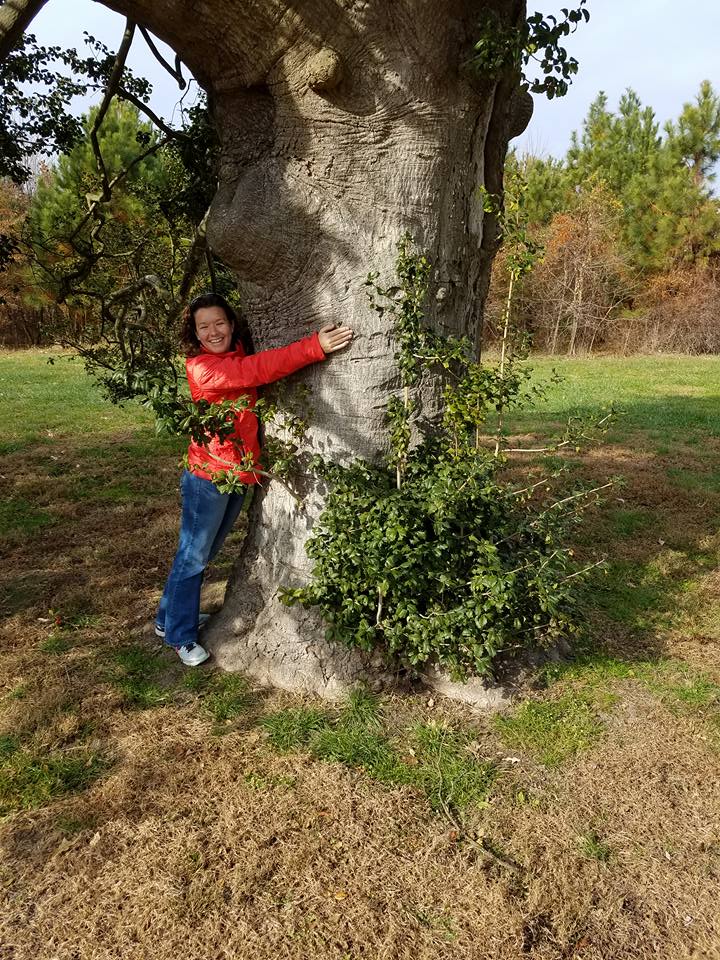
I guess sometimes I am a tree hugger.
This goes for the word “Environmentalist,” too.
This term gets used synonymously with tree-hugger, eco-activist, and language that implies extreme thinking. If you look up the definition of “environmentalist,” different dictionaries have different definitions. Miriam Webster’s definition includes activism and the effects of pollution on the human environment. That definition does not define me.
Now dictionary.com defines environmentalist as, “an expert on environmental problems” and “any person who advocates or works to protect the air, water, animals, plants, and other natural resources from pollution or its effects.” That sounds more like me.
But the definition I like the most is the British definition from the Collins English Dictionary, “a person who is concerned with the maintenance of ecological balance and the conservation of the environment” and “a person concerned with issues that affect the environment, such as pollution.” That is me.

Working to protect the air, water, animals, plants, and other natural resources
With that definition, most people are environmentalists.
According to a 2020 Pew Research Center Report, a median of about 75% of people in 20 regions across the planet say pollution of rivers/lakes/oceans, the amount of garbage/waste/landfills, air pollution, loss of forests, and extinction of plants/animals are a “big problem.” In the U.S., the percent of people concerned about these issues is slightly less than the study’s international average (but still over half).
I know my list of acquaintances is probably biased but as I think of all the people I know, they each have at least one environmental concern that I am aware of: pollinator decline, water quality or quantity, pesticide use, destruction of farmland, invasive species, climate change, endangered species, flooding, algal blooms, feral cats, wildfires, fish health, wastefulness, litter……
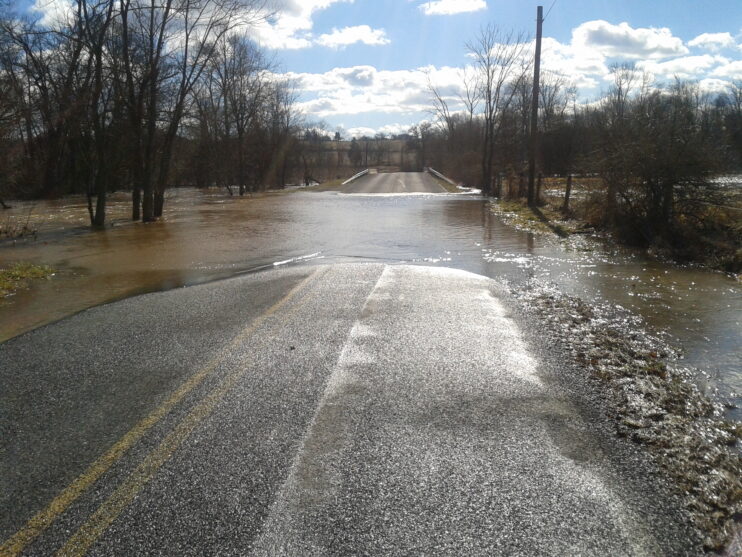
Just one of our many environmental concerns
So what do we do with these concerns? We hope for change and keep living our lives.
And then for some of us, the guilt creeps in.
The guilt that I am part of the problem and I am not doing enough. It doesn’t help when I read stories about the person who has become completely zero-waste, or is living off the grid, or has invented a great machine to clean the litter from our oceans, or some other amazing feat that makes a difference. But that guilt and comparison is not helpful, and I know I have made a difference.
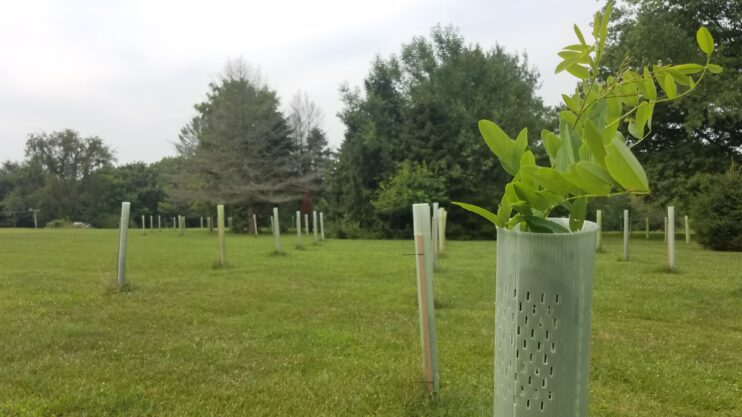
I have planted over 100 trees on my property, working to reduce turf areas and plant native.
I am learning to change the story in my head and to focus on what I am accomplishing, no matter how small, instead of what I haven’t.
- I have almost completely eliminated my use of plastic bags, plastic wrap, and aluminum foil. Reusable containers and bags and fabric bowl covers are used constantly in my kitchen.
- I planted 100 trees on our property within a month of moving in. We have a lot of turf left, but it’s a big first step.
- We buy all our summer and fall produce locally by participating in a local farm’s Community Supported Agriculture (CSA) program and try to grow some ourselves.
- I have taught my family about native plants, and it’s been rewarding to see them shift their plant purchasing choices.
- We are using cloth diapers with our son about 50% of the time.
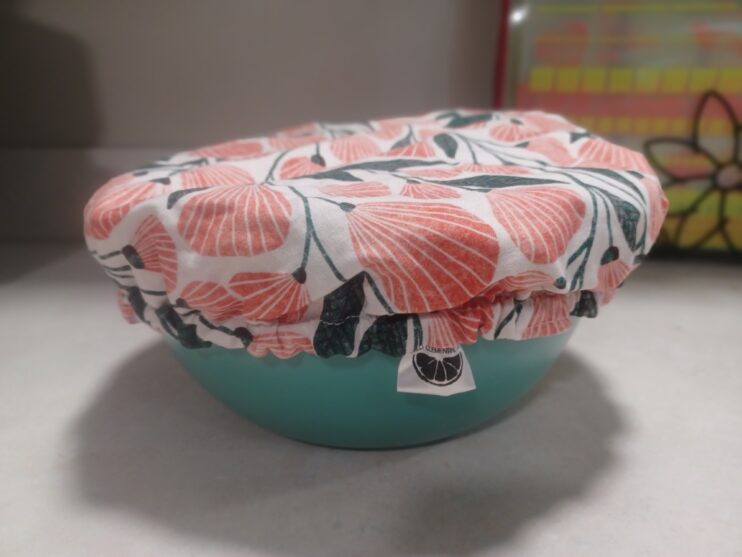
My fabric bowl covers are handmade by a small-business
When I teach about stormwater, I always talk about the drop in the bucket. A single house doesn’t cause a stormwater issue, but a whole neighborhood of impervious surface can create a flood. A single tree won’t fix the health of the Chesapeake Bay, but it will prevent sediment erosion at its roots. I guess there are two buckets: the bucket of problems and the bucket of solutions. But since environmental issues are “wicked” problems as my boss, Matt Royer, always says, we probably have bucket brigades. So for me, I am going to keep focusing on what I can do and paying attention to how I am filling up my personal bucket of environmental success– one drop, one choice at a time.
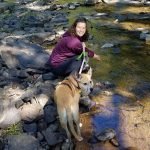
Kristen Koch is the Program Manager for the Penn State Agriculture & Environment Center. She coordinates watershed partnership initiatives such as the Conewago Initiative and the Chiques Reenvisioned project. She is a co-coordinator of the Greening the Lower Susquehanna Volunteer Corps, a group of 500+ volunteers that help plant riparian buffers and other water quality BMPs. She also develops and leads educational programming as part of the Penn State Extension Water Resources Team and is an instructor for the Chesapeake Bay Landscape Professional level 1 training. She has a B.S. in Environment Resource Management and has a Master’s in Public Administration from Penn State.


